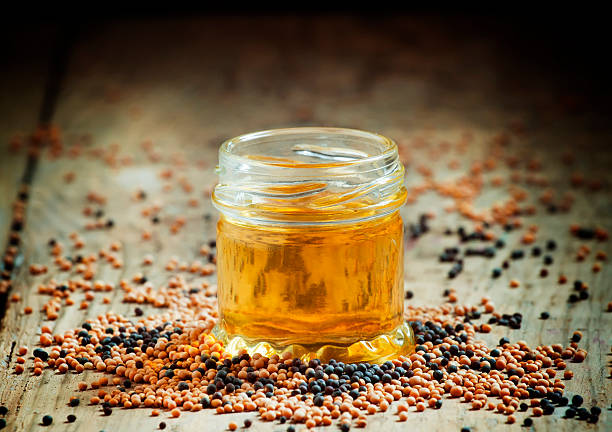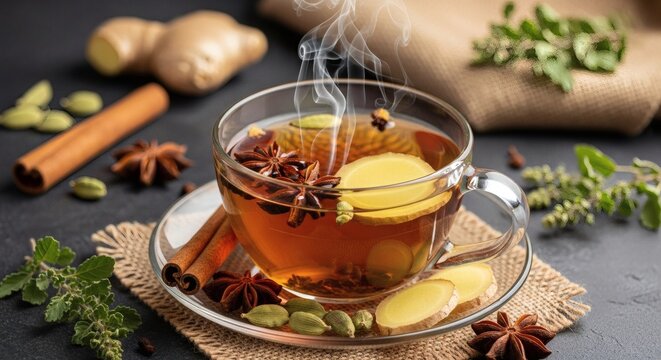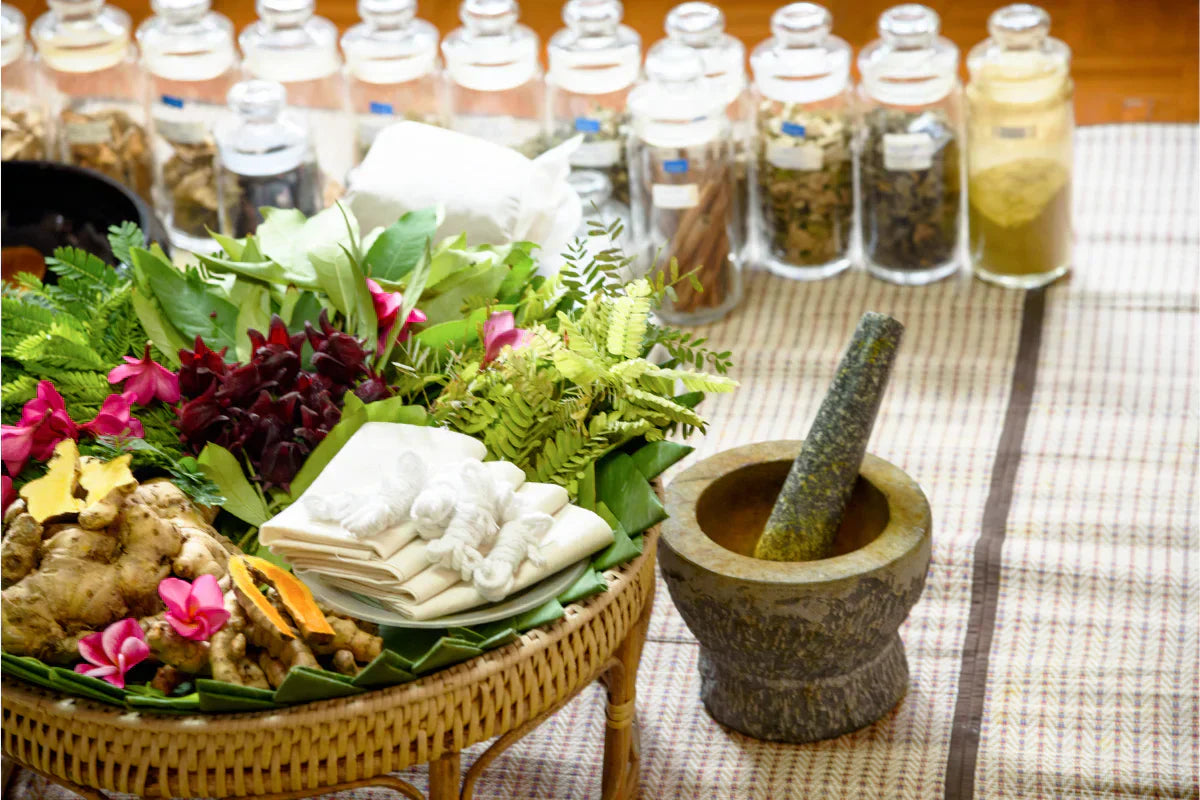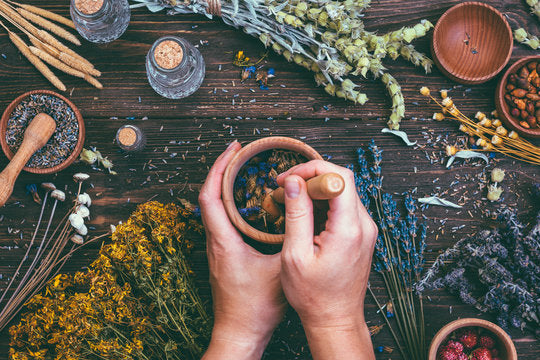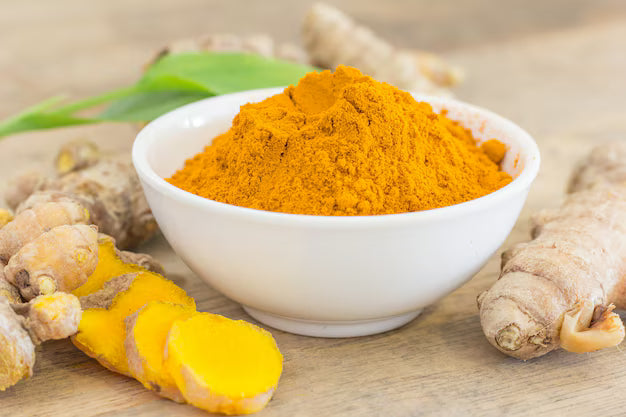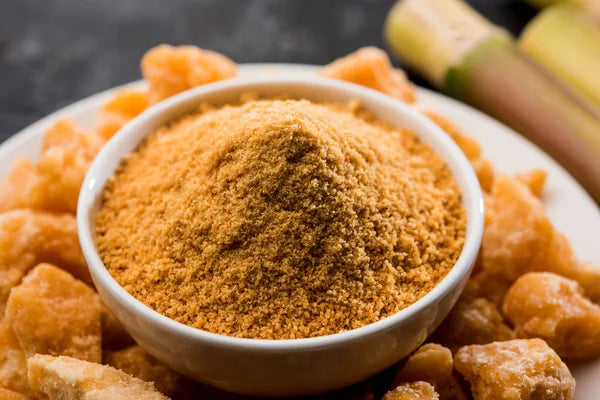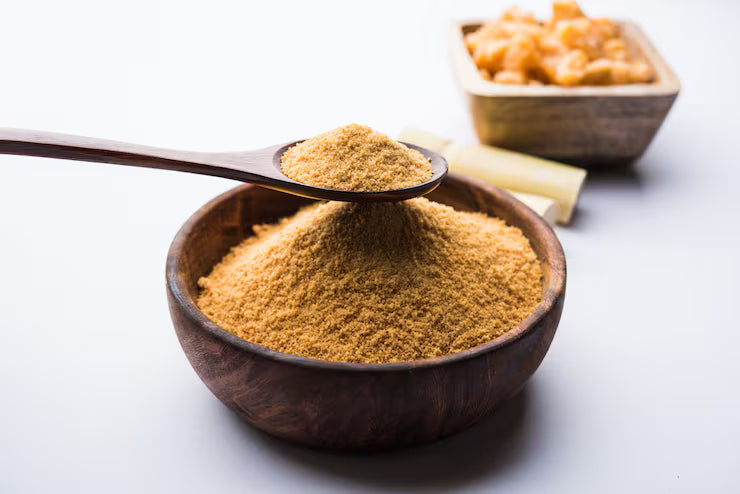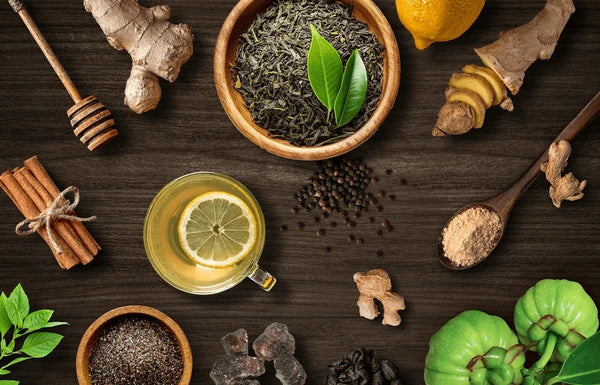Ayurvedic Guide to Sandalwood: Skin Benefits, Uses & Side Effects
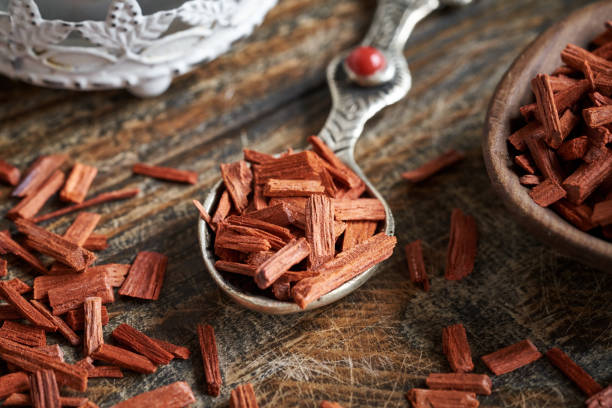
Understanding Sandalwood: Origins and Importance
What is the common link between Tipu Sultan, 18th century ruler of Mysore, and celebrities Justin Bieber, Taylor Swift, Madonna, our very own Priyanka Jonas Chopra and more?
Sandalwood
Yes, you read that right. In 1792, Tipu Sultan declared Indian sandalwood (Santalum album) a “Royal Tree”, establishing a state monopoly on its trade. In present-day Bollywood and Hollywood, celebrities swear by this unique scent: variously described as a coming together of warm, woody notes with hints of earthy spice.
But, this invaluable tree – which takes 30 years to grow to maturity - has many more therapeutic qualities, and is a top natural product for skin care. Sandalwood or Chandana has been deeply revered in Ayurveda for thousands of years, and resonates deeply within the fabric of Indian culture. Originating from the heart of India, the Indian sandalwood tree is known as a symbol of purity and tranquillity in Indian spiritual texts and culture.
Sandalwood continues to be used in rituals, skincare, and traditional medicine from ancient times - the Rig Veda, dating back to 1500 BC, praises sandalwood (Chandana) for its fragrant purifying powers and cooling properties.
In Ayurveda, sandalwood is a cherished remedy for balancing the fiery Pitta dosha. This balance is crucial for maintaining overall well-being, as it helps soothe the mind and body, promoting harmony within. The aromatic qualities of sandalwood are believed to elevate the spirit, making it an essential component in spiritual practices.
Its oil, extracted from the heartwood, is not only used for its scent but also for its therapeutic benefits, including anti-inflammatory and antiseptic properties. This ancient wood has indeed come centre-stage in modern times, bridging the gap between tradition and contemporary wellness.
Quick TL;DR — Sandalwood (Chandana)
- Ancient + Iconic: Revered in Ayurveda and culture; cooling, soothing, and sattvic.
- Ayurvedic Actions: Shita virya; pacifies Pitta, mildly balances Kapha, neutral for Vata.
- Skin Benefits: Soothes inflammation, antimicrobial, hydrates, improves tone, aids healing, supports anti-aging.
- Types & Uses: White/Red/Australian/Hawaiian/Fiji; skincare, rituals, aromatherapy; easy DIY masks/oils.
- Safety: Patch test, use pure sources, moderate application; consult during pregnancy or if sensitive.
Ayurvedic Properties of Sandalwood
In Ayurveda, Chandan (Santalum album – White Sandalwood, and Pterocarpus santalinus – Red Sandalwood) is revered as a cooling, calming and sattvic dravya (substance) that harmonises the mind, body, and spirit. Its qualities are described through the classical Ayurvedic framework of Rasa (taste), Guna (qualities), Virya (potency), Vipaka (post-digestive effect), and Dosha action.
Rasa (Taste)
-
White Sandalwood (Shweta Chandan): Predominantly Madhura (sweet) and Tikta (bitter).
-
Red Sandalwood (Rakta Chandan): Primarily Tikta (bitter) and Kashaya (astringent).
These rasas contribute to its cleansing, detoxifying, and soothing effects.
Guna (Qualities)
-
Laghu (light): Easy to digest, does not burden the stomach.
-
Ruksha (dry): Helps absorb excess moisture and reduces oiliness.
-
Mridu (soft, gentle): Non-irritating, suitable for delicate skin and internal use in regulated forms.
Virya (Potency)
-
Shita Virya (Cooling potency): Sandalwood is inherently cooling, making it especially effective in balancing aggravated Pitta dosha. It calms internal heat, reduces burning sensations, alleviates excessive thirst, and soothes inflammatory skin conditions.
Vipaka (Post-digestive Effect)
-
Madhura Vipaka (Sweet post-digestive effect): Nourishes tissues, supports rejuvenation (Rasayana), and contributes to long-term balance without aggravating digestive fire (Agni).
Effect on Tridosha
-
Pitta: Strongly pacifying – sandalwood is one of the best natural remedies to reduce excess heat, irritability, inflammation, and burning.
-
Kapha: Balances Kapha mildly due to its dryness and lightness, preventing excessive mucus accumulation.
- Vata: Neutral – Does not aggravate Vata but is not a primary herb for Vata conditions.
Sandalwood: Sattvic Influence
Beyond the physical level, sandalwood is classified as Sattvic dravya in Ayurveda. It enhances clarity, peace, and devotion. This is why sandalwood paste is traditionally applied during meditation, rituals, and spiritual practices – to calm the mind and elevate consciousness.
Are There Different Types of Sandalwood?
Yes, there are. Check out sandalwood: types and uses:
|
Type of Sandalwood |
Origin |
Properties |
Applications |
|
White Sandalwood |
India |
Cooling, anti-inflammatory, antiseptic |
Used in skincare, cosmetics, and rituals |
|
Red Sandalwood |
India |
Anti-emetic, detoxifying, blood purifying |
Beneficial for skin conditions, fever, and inflammation |
|
Australian Sandalwood |
Australia |
Aromatic, calming |
Used in perfumes and aromatherapy |
|
Hawaiian Sandalwood |
Hawaii |
Soothing, fragrant |
Utilized in traditional ceremonies and skincare |
|
Fiji Sandalwood |
Fiji |
Unique scent, rich in oils |
Employed in perfumes and incense |
Top Benefits of Sandalwood for Skin
1. Anti-Inflammatory Properties
Sandalwood is renowned for its ability to soothe inflammation. Its natural compounds may help reduce redness and irritation, making it an excellent choice for sensitive skin.
2. Antimicrobial Effects
The antimicrobial properties of sandalwood can help combat acne-causing bacteria, promoting clearer skin and reducing breakouts.
3. HydratAyurvedic Guide to Sandalwood: Skin Benefits, Uses & Side Effects
ion and Moisture Retention
Sandalwood oil is often used in moisturizers due to its ability to hydrate the skin without clogging pores, leaving your complexion soft and supple.
4. Skin Tone Improvement
Regular use of sandalwood can help improve skin tone and texture. Its varnya (complexion-promoting) properties assist in lightening blemishes and enhancing radiance.
5. Healing Wounds
Sandalwood has been traditionally used to promote wound healing. Its antiseptic qualities help protect the skin from infections, aiding in the recovery process.
6. Stress Relief
Beyond its physical benefits, the aroma of sandalwood is calming and may help reduce stress levels, which can, in turn, positively impact skin health.
7. Eczema and Psoriasis Relief
For those suffering from chronic skin conditions like eczema and psoriasis, sandalwood can provide soothing relief, helping to alleviate symptoms and discomfort.
8. Aging Support
Sandalwood's antioxidant properties may help fight free radicals, contributing to youthful-looking skin by reducing the appearance of fine lines and wrinkles. Incorporating sandalwood into your skincare routine can provide a multitude of benefits, enhancing your natural beauty while promoting overall skin health. Its gentle yet effective nature makes it suitable for all skin types, inviting you to experience the nurturing touch of this sacred wood.
Sandalwood: DIY Recipes for Skin Care
1. Sandalwood Powder Face Mask
Mix sandalwood powder with rose water to create a paste. Apply it to your face for 20 minutes, then rinse off with cool water. This mask may help brighten your complexion and soothe irritated skin.
2. Sandalwood Oil for Acne
Dilute a few drops of sandalwood oil with a carrier oil, such as jojoba or coconut oil. Apply it to acne-prone areas to benefit from its antimicrobial properties.
3. Sandalwood Soap
Incorporate sandalwood soap into your daily routine. Its gentle cleansing action may help keep your skin clear and hydrated while enjoying the soothing aroma.
4. Sandalwood Infused Bath
Add sandalwood oil to your bath for a relaxing experience. The calming scent can help alleviate stress while nourishing your skin.
5. Sandalwood and Milk Paste
For dry skin, mix sandalwood powder with milk to form a paste. Apply it to dry areas for a hydrating treatment that may restore moisture and softness.
Maharishi Ayurveda Sandalwood Soap: An Easy Daily Ritual for Glowing Skin
Introduce this after the face‑pack section.
Bring the traditional elegance of Ayurveda into your everyday routine with Maharishi Ayurveda Sandalwood Soap a gentle, balancing bar that works wonders for the whole body and face.
Why it’s perfect for daily use:
- Designed for everyday cleansing on both face and body, this creamy soap lathers beautifully and rinses clean without stripping skin’s natural protective barrier.
-
It nourishes from within, combining the elegance of Agmark-certified Indian sandalwood essential oil with Ayurvedic staples like Blue Water Lily, Turmeric, and Flame of the Forest. These ingredients work synergistically to restore your skin’s natural glow and suppleness.
- The natural cooling and soothing properties of sandalwood make it especially ideal for acne-prone, sensitive, or irritated skin. It calms and soothes, making each wash a soothing ritual rather than just a cleanse.
-
It helps maintain skin’s hydration & soft texture, delivering cleanliness while avoiding that tight, dry feeling post-wash (though specific pH-balancing claims may not be explicitly stated, the gentle nourishment supports moisture retention).
-
Suitable for all skin types, this formulation is crafted to support balanced skin health without causing imbalance or irritation.
Is Sandalwood Good for All Skin Types?
Sandalwood (Chandan) has been treasured in Ayurveda and natural skincare for centuries, thanks to its cooling, soothing, and balancing qualities. Whether your skin is oily, dry, or sensitive, sandalwood powder and paste can be adapted to support your skin health.
For Oily & Acne-Prone Skin
-
Why it works: Sandalwood has natural raktashodhak (blood-purifying) and sneha-shoshak (oil-absorbing) properties.
-
Benefits: Helps control excess sebum, reduces acne breakouts, and minimizes enlarged pores.
-
Usage tip: Mix sandalwood powder with rose water or Multani mitti for a clarifying face pack.
For Combination Skin
-
Why it works: Its tridosha-balancing quality makes sandalwood suitable for both oily and dry areas of the face.
-
Benefits: Controls shine in the T-zone while soothing drier patches.
-
Usage tip: Blend with aloe vera gel for a balanced, hydrating mask.
For Sensitive & Redness-Prone Skin
-
Why it works: Sandalwood’s Shita Virya (cooling potency) calms irritation, redness, and heat-related flare-ups.
-
Benefits: Provides relief from rashes, sunburn, and inflammation.
-
Usage tip: Combine with cucumber juice or chamomile tea for a soothing application.
For Dry Skin
-
Why it works: On its own, sandalwood can feel slightly drying because of its ruksha guna (dry quality).
- Benefits: When paired with moisturising ingredients, it nourishes and revitalises dry skin.
- Usage tip: Mix sandalwood with honey, raw milk, or almond oil for a hydrating face mask.
Cultural Significance of Sandalwood in Ayurveda
Sandalwood holds a revered place in Ayurvedic traditions, symbolizing purity, tranquility, and healing. Its historical significance is deeply woven into the cultural tapestry of India, where it has been used for centuries in spiritual rituals and wellness practices.
-
Spiritual Rituals
In many Hindu ceremonies, sandalwood is used to create sacred offerings and is often applied to the forehead as a mark of reverence. Its calming aroma is believed to enhance meditation and spiritual awareness.
-
Traditional Medicine
In Ayurveda, sandalwood is classified as a cooling herb, making it essential for balancing the fiery Pitta dosha. It has been traditionally used to treat various ailments, including skin conditions, fever, and anxiety.
-
Cultural Heritage
Sandalwood carvings and decorative items are cherished in Indian culture, often gifted during significant life events. The wood's exquisite fragrance is synonymous with luxury and refinement, making it a sought-after material in artisanal crafts.
-
Modern Relevance
Today, sandalwood continues to be a vital component in Ayurvedic formulations, skincare products, and aromatherapy. Its timeless appeal bridges the ancient and modern worlds, inviting new generations to experience its benefits.
Does Sandalwood have Side-effects?
1. Patch Test
Always conduct a patch test before using sandalwood products, especially if you have sensitive skin or allergies. Apply a small amount to a discreet area and wait 24 hours to check for any adverse reactions.
2. Avoid Synthetic Products
Ensure you use pure, high-quality sandalwood products. Synthetic or adulterated sandalwood may cause irritation or allergic reactions.
3. Consultation for Pregnant Women
Pregnant women should consult with a healthcare professional before using sandalwood, as its effects during pregnancy are not well-studied.
4. Use in Moderation
While sandalwood is beneficial, using it excessively may lead to skin irritation. Moderation is key to enjoying its benefits without adverse effects.
5. Not for Open Wounds
Avoid applying sandalwood directly to open wounds or severely irritated skin, as it may cause discomfort or irritation.
6. Potential Allergic Reactions
Rare cases of allergic reactions have been reported, so it's crucial to be cautious and attentive to your skin's response. By following these safety considerations, you can enjoy the many benefits of sandalwood while minimizing the risk of side effects. Always listen to your body and prioritize your skin's health.
Conclusion: Embracing Sandalwood for Holistic Wellness
In conclusion, sandalwood stands as a timeless treasure in the realm of Ayurvedic medicine and holistic wellness. Its origins are steeped in tradition, and its benefits extend far beyond mere fragrance. From soothing skin irritations to promoting emotional well-being, sandalwood offers a plethora of advantages that resonate with both ancient wisdom and modern needs. As you explore the various types of sandalwood and their unique properties, consider how you can incorporate this sacred wood into your daily life. Whether through skincare, meditation, or rituals, sandalwood invites you to embrace its calming essence and nurturing qualities.
Remember to prioritize ethical sourcing, ensuring that your choices contribute to the preservation of this precious resource. By integrating sandalwood into your wellness routine, you not only enhance your own health but also honor the rich cultural heritage it represents. Embrace the journey of discovery with sandalwood, and let it guide you toward a more balanced and harmonious life.
Bring Ancient Wisdom to Your Skincare
Discover the soothing, healing touch of authentic Ayurvedic sandalwood.Buy Sandalwood Soap Today!
Reference
Dravyaguna by P. V Sharma
FAQs
1. What is sandalwood used for?
Sandalwood is used in skincare for its anti-inflammatory and antimicrobial properties, as well as in spiritual rituals for its calming aroma.
2. Can sandalwood help with acne?
Yes, sandalwood may help reduce acne due to its antimicrobial properties, making it beneficial for acne-prone skin.
3. Is sandalwood safe for all skin types?
Sandalwood is generally safe for all skin types, but it’s recommended to perform a patch test before use, especially for sensitive skin.
4. How often can I use sandalwood powder on my face?
Using sandalwood powder two to three times a week is advisable for optimal benefits without irritation.
5. Can sandalwood soap remove tan?
Sandalwood soap helps reduce tanning over time by soothing sunburn, calming skin inflammation, and gently removing surface impurities. While it may not completely erase deep suntan instantly, regular use can restore natural skin brightness and prevent further darkening.
6. Can sandalwood lighten skin tone?
Sandalwood is known for its varnya properties, which may help improve skin tone and reduce blemishes.
7. Are there any side effects of using sandalwood?
While rare, some individuals may experience allergic reactions. Always conduct a patch test before use.
8. Is sandalwood soap good for skin?
Yes. Sandalwood soap is gentle, cooling, and nourishing. It cleanses without stripping natural oils, helps calm acne-prone or irritated skin, and maintains softness and hydration. Regular use supports healthy, balanced, and glowing skin.
Popular Posts

Do Ayurvedic Facial Oils Clog Pores? The Truth About Non-Comedogenic Herbs
31 Dec, 2025Introduction — Oils Aren’t the Enemy, Imbalance Is Oils themselves are not the cause of acne o...
Read more
Ayurveda Isn’t ‘Slow’: It Deep-dives to Build Lasting Health
26 Dec, 2025Introduction — Ayurveda Works With Nature, Not Against It Ayurveda is often perceived as ‘slow...
Read more
Why Winter Makes Your Knees Ache: Vata-Balancing Tips & How to Use Pirant Oil
23 Dec, 2025Winter often brings an unwelcome rise in knee pain. Modern science and Ayurveda explain why joint...
Read more




 Popular Read
Popular Read




































